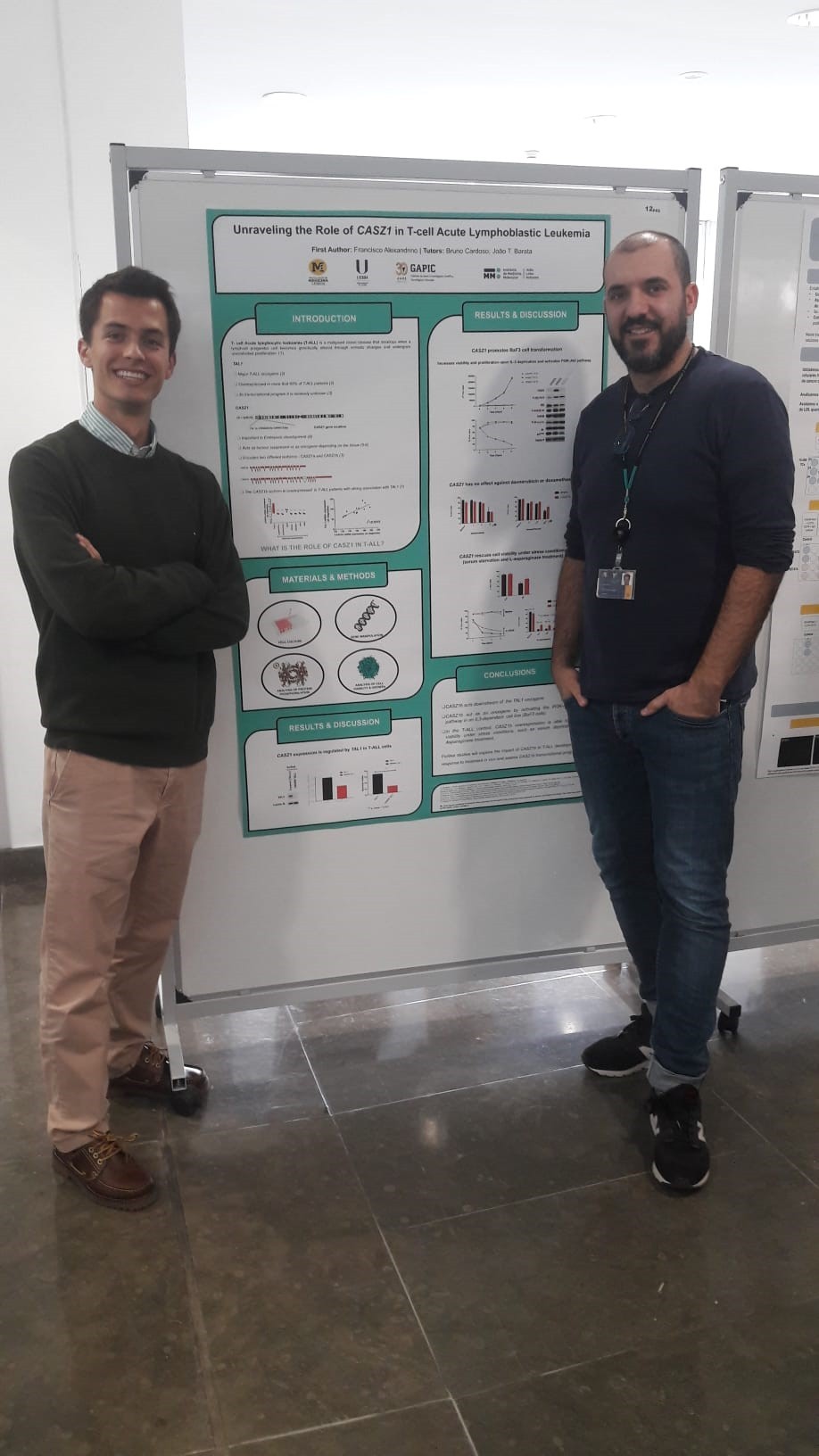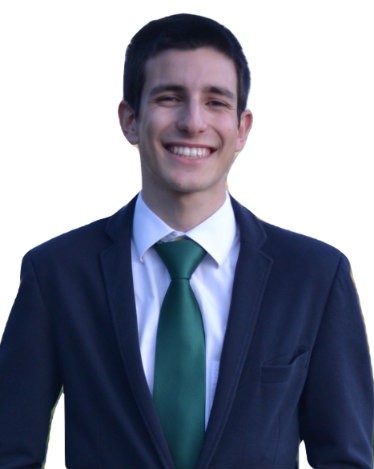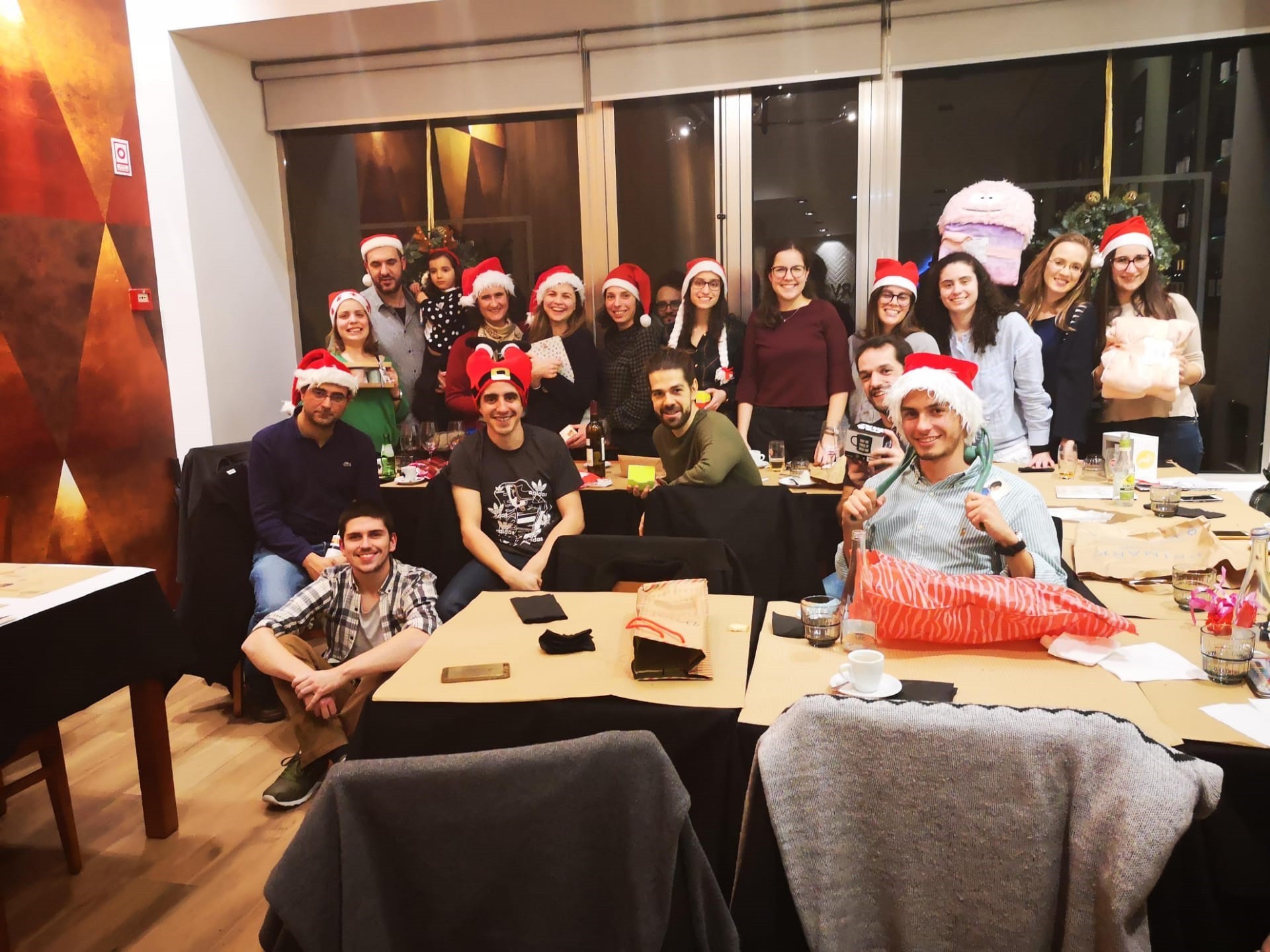They are young, curious and non-conformist. Two of the winners of the Research Day accepted the invitation for a short interview and we came to know a little more about what they are curious about. We introduce you to Francisco Alexandrino, a year 4 student of the Integrated Master Degree in Medicine, and to Guilherme Vilhais, in year 5.


You are both medical students, researchers and winners of the Gapic Award. What lies at the basis of your inspiration?
Guilherme: I decided that I wanted to try doing research at the end of year 3. I had just had Oncobiology, one of the areas that I liked most during the degree, and so I decided that I wanted to be part of a project in this field. I spoke with Professor Sandra Casimiro, who had been my professor of Oncobiology practices and expressed my desire to submit a Research Project to the GAPIC “Education through Science” Programme, with the aim that it would also become my Master Degree's Final Work. We talked about the projects that the Laboratory had underway and aligned it with this theme. It was an issue that needed to be clarified in order to make a comprehensive study that was already underway more robust and I was attracted by the fact that it involved concepts and ways that were already familiar to me and the hypothesis that we initially formulated was very intuitive.
Francisco: The people who inspire me the most, in the world of Science, are those who, in the midst of their humility and simplicity, have achieved great things through their discoveries. However, in this context, I have to mention, without a doubt, Sidney Farber, the father of modern chemotherapy, and one of my great inspirations in the world of Medicine and Science in general. Dr Farber declared war on cancer in 1948, having obtained, for the first time, through a drug created by himself, the aminopterin antifolate, a clinical remission of a cancer. Robert Sandler, a 2-year-old boy with ALL (a disease that is essentially paediatric and that I studied), was the first patient to receive the “miraculous” drug from the unlikely Dr Farber and to go down in history. Sidney Farber left the shadow of his cold basement at Boston Hospital where he worked as a pathologist and started a tireless fight against cancer, trying to gather efforts, for the first time in history, around what would become the disease not of his century, but ours. It is appropriate to give this historical context precisely for two reasons: first, because the disease I studied was the one where the fight against cancer began, which in itself is a source of pride; but, on the other hand, because Sidney Farber is the personification of the attitude that we must assume in the world of Science, a model of perseverance, by which I have always tried to guide myself. I therefore faced this study of mine always with great responsibility, but also with great enthusiasm, since I found myself for the first time in an environment where I could, who knows, make a difference in someone's life, just as Dr Faber did for the first time in little Robert's life.
Like Dr Farber, you also went missing in the “cold cellars” of CHULN, where you continued the fight cancer. Can you explain better what the research work of each one consisted of?
Guilherme: My study focused on studying the implications of one pathway, the RANK-RANKL pathway in Luminal Breast Cancer. This pathway has been known for many years as being important in the pathophysiology of Bone Remodelling and Bone Metastases of Breast Cancer, but its role in Primary Tumours is still unclear. My study focused on trying to answer a specific question based on the observation of the group from Professor Luís Costa's Laboratory that the cells that overexpress this receptor, the RANK, despite having characteristics of greater aggressiveness, form small tumours when injected into the mammary glands of mice. We studied these cells in vitro and in vivo and came to the conclusion that they are very little proliferative, which can be an important mechanism of resistance to Chemotherapy. Additionally, we realized that this pathway also interferes with the expression of oestrogen receptors, a target widely used in Luminal Breast Cancer. Breast Tumours are heterogeneous. They have many different cells, including cells that overexpress RANK. Our observations suggest that this cell subpopulation, by presenting these characteristics that give it resistance to the therapies we have today, may persist, becoming later responsible for the progression or recurrence of cancer.
Francisco: The study that I conducted over more than a year at Professor João Barata's Laboratory was based on the characterization of a peculiar gene, CASZ1, in the context of Acute T-Cell Lymphoblastic Leukaemia (T-ALL). CASZ1 was described in the literature as having a dual behaviour in different tumours, as it could behave as a suppressor in some but also as a promoter in others, which is unusual. It was not described in the ALL and it was not me who learned about it on my own initiative, it was my tutor, Bruno Cardoso, following his doctoral thesis. I then started my work in the laboratory under the supervision of Bruno, who was already studying this gene. I was responsible for studying it in different cell lines, trying to understand whether or not this gene contributed to an aggressive behaviour of leukemic cells and whether or not it could induce resistance to some therapies. We ended up discovering that, in the context of ALL, CASZ1 can behave as an oncogene, inducing stress resistance in cells, a condition created by the deprivation of foetal bovine serum, the medium that nourishes them and enables their viability and proliferation. In addition to this resistance to stress, CASZ1 has also demonstrated that it increases cell resistance to L-asparaginase, a drug that deprives cells from asparagine, just as the aminopterin drug, created by Farber in 1947, depleted cells of children with leukaemia from folate, killing leukemic cells, inducing remissions, which were unfortunately short-lived, but which opened the doors to a whole new world - that of chemotherapy.
Regarding these findings, what is the applicability of your research studies in clinical practice?
Guilherme: This study, and the most comprehensive project it is part of, are a little bit the first step to study the potential benefit of pharmacologically blocking the RANK-RANKL Pathway in order to improve the prognosis of Primary Luminal Breast Cancer. It is true that we have a lot of therapeutic weapons aimed at Luminal Breast Cancer, but there is still a long way to go. We have to identify the forms of resistance that the cancer finds to escape us and find a way to block them and who knows if this is not one of them.
Francisco: It will be important, in the future, to study whether patients who have higher rates of resistance to L-asparaginase are those who have higher CASZ1 expression in their leukemic cells. With this project, we were able to characterize this Leukaemia a little better, a work that has been pioneered by the laboratory I am part of. In general, although this leukaemia has remission rates above 80% in paediatric age, it is important to continue to discover new biomarkers and therapeutic targets. Science is made up of curious and nonconformist persons and it was from this perspective, without knowing what to expect from this gene, that we managed to make this small discovery, but at the same time so relevant for everything that it taught me.
From the enthusiasm you have shown, I understand that the support of the Education through Science Programme was fundamental for the advancement of your studies. How do you describe GAPIC's support, as well as that of the AEFML in practical terms?
Guilherme: The GAPIC's "Education through Science" Programme makes it very easy to carry out a research project during the Integrated Master Degree and encourages students to do it. I think it is very well done from the moment we immediately associate “I would like to conduct research" to "I'm going to do a GAPIC project". Second, the monetary support is important. Not being a very high amount, given the real costs of doing research in this area, it is a help and encourages the Labs TO receive undergraduate students.
Francisco: This project, more than all the scientific and laboratory experience it gave me, made it possible for me to meet incredible people who inspired me to be more and better in favour of Science. These people, namely, João Barata, Cláudia Faria, Bruno Cardoso, Teresa Serafim and Isabel Alcobia, made it possible for me, a mere medical student, without any qualification and laboratory experience, with just a gigantic curiosity and ambition, to integrate a research laboratory of excellence, in search of a new world. I cannot fail to mention the incredible team of João Barata’s Lab, who welcomed me as if I was one of them, as you can see from the photo.

This new reality took me daily out of my comfort zone, because as someone said on Research Day - Science teaches us to make mistakes, while in Medicine we are taught not to fail. I have often failed, of course, and the one who thinks that the world of science is easy is wrong, because a lot, a lot of work is thrown away, something that I had no idea and that sometimes left me frustrated, but no less motivated. This dichotomy transcends any student who, like me, was lucky to find himself in this environment. For all the reasons that I mentioned, I believe that an investment like the one made this year by the AEFML, in partnership with the GAPIC, will be crucial to continue to boost medical knowledge and attract new and potential students to the laboratories. This is how Portugal will be able to be at the level of the science of the major ones, from which we are still distant, not because of the lack of potential, nor because of the lack of brilliant minds, nor the lack of commitment and work, but because of the lack of political strategy regarding Science, something that I think is about to change soon. I also have to thank GAPIC for the 22nd “Education for Science” Programme, which, for sure, over years of successive improvements, has led future doctors to break down barriers, making it possible, from an early age, for their clinic questions to move on to research, because here is where the key lies and only in this way we can improve the lives of patients in all aspects.
Are you interested in continuing your cancer research in the future?
Guilherme: I still haven't decided what I want to do in the future. There are some open possibilities, but I would like to work on something related to Oncology. I think it's an area that will expand a lot during our lifetime. It is advancing a lot from a scientific point of view and represents, at the same time, a huge challenge of financial sustainability and responsiveness to a population with an increasing average life expectancy. It is an area where research is truly inseparable from, whether in its basic, translational or clinical aspects. If I had to choose a specialty today, I would choose Medical Oncology and I would certainly like to complement my clinical practice with research in Oncology.
Francisco: As I mentioned earlier, I'm not sure yet, but without a doubt, it will be Science and Research.
Can you share with us what the destination of the monetary prize will be?
Guilherme: I'm still not 100% sure of the destination of the monetary prize. I would like to use it to do something within the scope of training in the field of Oncology, but it is something that will have to be better discussed with the AEFML, in this case.
Francisco: The destination of the monetary prize will undoubtedly be Science and Research.
Isabel Varela
Editorial Team

